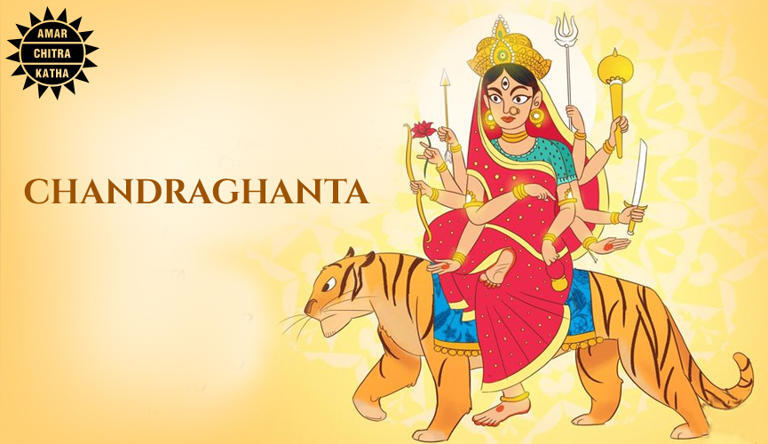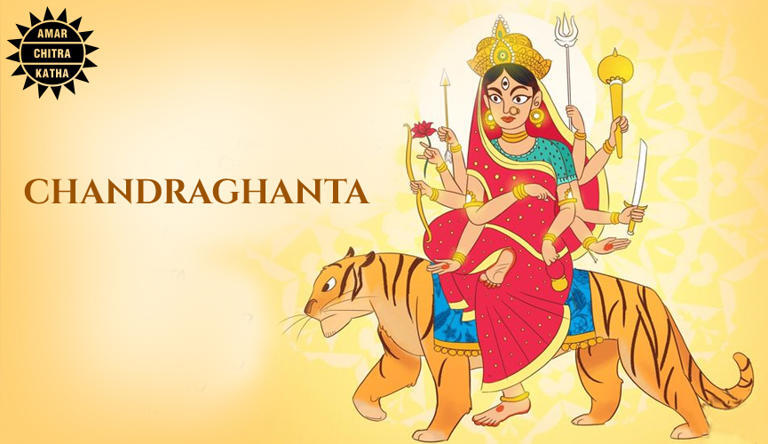The festival of Navratri celebrates, very importantly, the woman and all her strengths, derived from Shakti herself. On the third day of Navratri, we worship Devi Chandraghanta, who represents Parvati as a married woman. In Sanskrit, the name Chandraghanta means “one who has a half-moon shaped like a bell”. After Parvati married Lord Shiva, she began wearing the half-moon on her forehead, much like Shiva himself who wore the half-moon in his matted locks. Chandraghanta is Lord Shiva’s Shakti when he takes the form of Chandrashekhara. It is said that Devi Chandraghanta’s third eye is perpetually open, so as to keep a lookout for evil.
Goddess Chandraghanta is depicted as having beautiful golden-hued skin, ten arms, and she rides a tiger. In four of her left hands she carries a trident, a mace, a sword, and a kamandala respectively, and in four of her right hands she carries a lotus flower, an arrow, a bow, and prayer beads. Her fifth left hand is in Varada Mudra, depicted her as a dispenser of boons, and her fifth right hand is in Abhaya Mudra, a gesture which denotes reassurance and safety.
Said to help dispel negative energy and bestow forgiveness to all, Devi Changraghanta is one of the Goddess’ more tranquil and serene forms. The sound of the bell-shaped moon on her head is said to dispel evil spirits and while she is associated with benevolence, she is a fierce warrior against evil.

The story of Chandraghanta tells us of the time Parvati was Lord Shiva’s new bride who was fresh out of her Brahmacharini avatar. When Tarakasura sent a bat-demon named Jatukasur to Mount Kailasha to attack Parvati, she sought her husband’s help. However, Lord Shiva was immersed in deep tapas, and unable to emerge from it he gently reminded Parvati that she is the Mother of the universe, Shakti herself, and is more than capable of fighting off evil that threatens the balance and harmony of the universe.
Emboldened, Parvati went out to face Jatukasur herself. The demon and his army covered the skies with their vast wings, and Parvati, unable to see in the dark, sought the help of the moon, Chandra Dev. Wearing the moon shaped like a bell on her head, she headed into battle, ringing the bell loudly to scare the bat-demon’s army away after which she killed Jatukasur.
One of the most important lessons to be derived from Devi Chandraghanta’s story is that no woman is weak without her man. Lord Shiva, as Devi Parvati’s husband, simply reminded his wife of her own innate powers and strength, gently urging her to play the role she was meant to play as the Supreme Mother.






